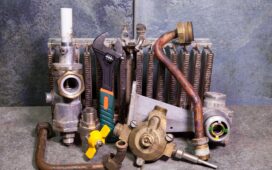Reverse osmosis (RO) is a highly effective and practical water purification method utilized across various industries and sectors. This widely adopted technology has proven invaluable in diverse industrial settings, offering extensive applications. Over time, industries of all kinds, including plants, have recognized the numerous advantages of RO for water purification. By 2001, it had become widely acknowledged as the most efficient and practical means of removing impurities from water.
As a professional providing reverse osmosis water in Toronto explains, RO technology is not limited to industrial use alone; it can also be implemented on a smaller scale in residential settings. Its effectiveness in eliminating dust, dirt, microbial particles, biological contaminants, and other impurities ensures clean and purified water production.
Comprehensive Instructions for Replacing Filters in Your Under-the-Counter Reverse Osmosis System
In this detailed guide, we will provide comprehensive instructions on effectively replacing all five filters in your under-the-counter reverse osmosis system. Follow these step-by-step instructions carefully to replace the pre-filters:
- Start by shutting off the water supply to the system. Rotate the arrow valve clockwise until the water flow ceases completely.
- Proceed by turning off the tank ball valve. Rotate the blue lever 90 degrees to accomplish this task.
- Lift the RO tap lever to release accumulated pressure within the RO system.
- Use a wrench to securely fasten and stabilize the RO system in its current position, ensuring stability during the replacement process.
- Rotate the first-stage filter housing clockwise to unlock the cover. If necessary, place the RO system on a stable surface to enhance accessibility and ease of handling.
- Once the cover is unlocked, carefully remove the existing filter from the housing and dispose of it appropriately if required. Use mild soap to clean the housing and ensure thorough rinsing to maintain cleanliness.
- Insert the new filter into the filter housing, ensuring a proper and secure fit to maintain optimal functionality.
Remember to repeat these steps for each filter within the system, meticulously adhering to the specific instructions and recommendations provided by the manufacturer for each filter. Maintaining a clean and fully operational reverse osmosis system is of utmost importance to achieve the desired level of water purification effectiveness.
Decoding the Elements of a Reverse Osmosis System
Now, let’s embark on a journey to explore the various components associated with faucet water:
– Feed tank
– Feed pump
– Pressure gauge for monitoring channel tension
– Sand filter featuring a pressure gauge
– Carbon filter equipped with a pressure gauge
– Water softener integrated with a pressure gauge
Furthermore, several other vital components exist within the system:
– PPC filter
– Pressure control system
– RO pump
– Membrane filters
– Wastewater platform
– Mineral wetness platform
– Effluent meters
– Storage tank
Let’s immerse ourselves in the operational procedure of this remarkably advantageous technique:
- Initially, the faucet water is the primary source, supplying water to the feed tank.
- The feed pump is pivotal by facilitating water transfer from the feed tank to the sediment filter.
- As the water enters the system, any sediment present settles at the bottom of the tank.
- Progressing upward, the water traverses through the sand filter and continues its journey toward the carbon filter.







